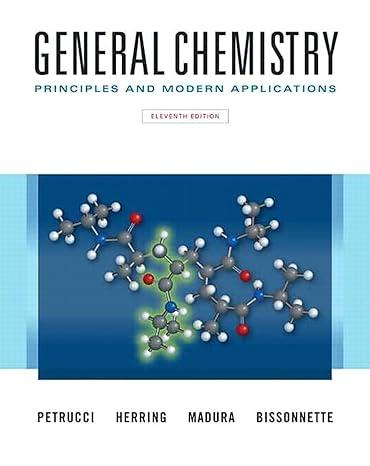In one of Fritz Habers experiments to establish the conditions required for the ammonia synthesis reaction, pure
Question:
In one of Fritz Haber’s experiments to establish the conditions required for the ammonia synthesis reaction, pure NH3(g) was passed over an iron catalyst at 901 °C and 30.0 atm. The gas leaving the reactor was bubbled through 20.00 mL of a HCl(aq) solution. In this way, the NH3(g) present was removed by reaction with HCl. The remaining gas occupied a volume of 1.82 L at 0 °C and 1.00 atm. The 20.00 mL of HCl(aq) through which the gas had been bubbled required 15.42 mL of 0.0523 M KOH for its titration. Another 20.00 mL sample of the same HCl(aq) through which no gas had been bubbled required 18.72 mL of 0.0523 M KOH for its titration. Use these data to obtain a value of Kp at 901 °C for the reaction N2(g) + 3 H2(g) ⇌ 2 NH3(g).
Step by Step Answer:

General Chemistry Principles And Modern Applications
ISBN: 9780132931281
11th Edition
Authors: Ralph Petrucci, Jeffry Madura, F. Herring, Carey Bissonnette





